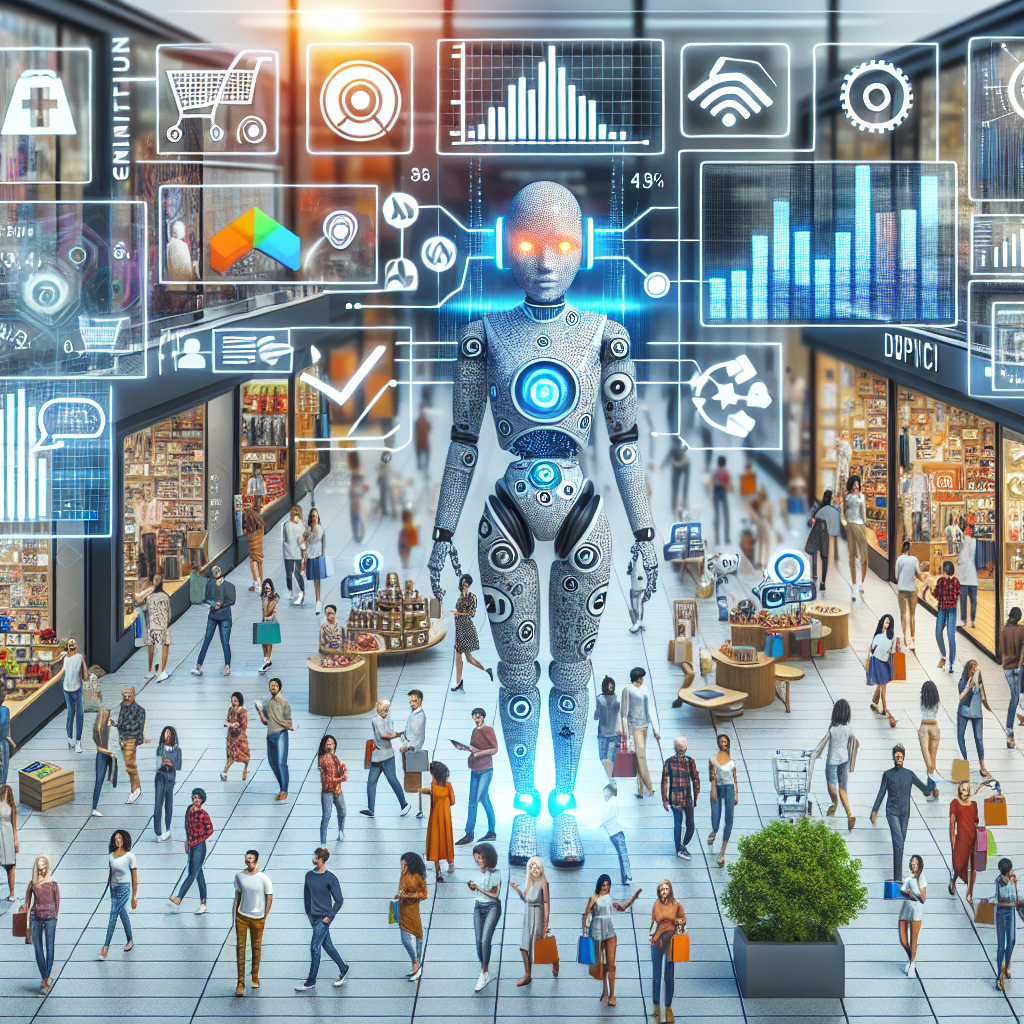Harnessing the Power of Incentivized Advertising, Shop Campaigns, and AI for Marketing Success
In today’s rapidly evolving digital landscape, businesses are continuously seeking innovative strategies to engage users, drive conversions, and optimize their marketing efforts. One such strategy that has gained significant traction is incentivized advertising. This approach involves offering rewards in exchange for specific user actions, making it an effective tool for boosting app installs, increasing engagement, and driving valuable conversions. The benefits of incentivized ads often outweigh the potential risks when used strategically. By partnering with incentivized advertising networks, brands can achieve substantial returns on their investments through advanced techniques like custom creatives and precise user targeting. Users who engage with incentivized ads are five times more likely to make in-app purchases, underscoring the critical role these ads play in boosting app retention. With numerous incentivized advertising networks available, each offering unique advantages, businesses have ample opportunities to leverage this form of marketing to foster user retention and brand loyalty.
The concept of incentivized advertising has its roots in the gaming vertical, where it accounts for a staggering 90% of gaming ads. This strategy has since expanded into other popular areas such as music streaming, social media, and retailing. Various types of incentivized ads exist, including rewarded video ads and offer walls, which not only enhance user engagement but also improve retention by providing valuable rewards. By offering incentives for engaging with ads, businesses can create a positive association with their brand, fostering long-term loyalty among users. Incentivized ad networks provide advanced analytics and data-driven insights, enabling businesses to maximize user engagement and acquisition while improving conversion rates and return on investment. Despite the potential for low-quality interactions and inflated customer acquisition costs, the strategic use of incentivized ads can effectively boost app installs, increase engagement, and drive valuable conversions.
Shop campaigns represent another powerful tool for businesses aiming to scale customer growth across platforms and countries while maintaining controlled costs. These campaigns allow businesses to target and convert both new and existing customers, with payment required only upon successful conversion on the shop platform. Shop campaigns offer a risk-free option for customer acquisition, providing access to millions of shoppers on top platforms through exclusive offers. Setting up a campaign is quick and straightforward, eliminating the need for new assets or audience building. Businesses maintain full control over their customer acquisition cost, targeted return on ad spend, and daily budget, allowing for precise audience targeting and optimization. Suggested parameters for optimal campaign setup are based on factors such as the brand’s average order volume, industry, and relevancy algorithms, quickly establishing the most effective campaign setup without the need for experimentation.
Successful brands running shop campaigns typically achieve a customer acquisition cost of at least half their average order value. The higher the customer acquisition cost, the better the campaign will rank and convert on the shop platform. Pay-per-sale pricing ensures that businesses never exceed their maximum customer acquisition cost, allowing for multiple campaigns to be run simultaneously with different customer acquisition costs and target return on ad spend for various audiences and countries. By aligning their return on ad spend with broader advertising and business objectives, businesses can optimize their campaigns across platforms. Once acquired, customers’ order data becomes accessible, enabling businesses to create segments and inform future marketing efforts. Additionally, rich branding and customization features on the shop channel can further increase engagement and conversion, enhancing the overall effectiveness of shop campaigns.
AI marketing has emerged as a transformative trend in the marketing industry, offering businesses the ability to optimize their campaigns and improve return on investment (ROI). By gathering data from diverse sources such as social media, website visits, and purchase history, AI-driven insights enable the creation of well-defined audience segments based on factors like age, location, and buying behavior. AI-powered segmentation can enhance conversion rates by up to 30% by targeting the right audience with personalized campaigns. Tailoring marketing messages for each audience segment leads to increased customer satisfaction and sales, while continuous data analysis and learning from customer interactions allow AI to refine targeting in real-time, resulting in improved ROI. Predictive analytics, utilizing machine learning models to analyze historical data, can forecast future actions and behaviors, improving campaign accuracy and boosting conversion rates by up to 20%.
Not all customer segments are created equal, and AI can identify high-converting segments to allocate ad spend more effectively, reducing waste and boosting ROI. By understanding market trends, AI helps adjust marketing strategies proactively to ensure relevance and meet evolving customer needs, leading to a significant increase in sales. AI-generated personalized content for different audience segments reduces content creation time and increases engagement rates by up to 70%. Personalization and relevant messaging make customers feel understood, increasing engagement and leading to higher conversion rates and better ROI. Automating content creation through AI can save substantial time and resources, leading to cost savings and a more efficient use of resources. AI also helps map out the customer journey, pinpointing stages where customers may drop off, allowing for the refinement of marketing strategies and improving retention rates.
Anticipating and addressing customer pain points through AI can enhance the customer experience, increase satisfaction, and identify opportunities for upselling and cross-selling, further boosting ROI. AI-driven customer retention strategies can increase retention rates by providing personalized, real-time content based on customer interactions. Real-time personalization through AI, such as showing customers related products they are more likely to be interested in, can increase conversion rates significantly. Relevant recommendations and personalization through AI can increase customer satisfaction and loyalty. AI enables agility in marketing by making real-time adjustments to campaigns, improving effectiveness and leading to a notable increase in ROI. Programmatic advertising, using AI to automate the ad buying process, saves time and increases efficiency by analyzing market demand and competitor pricing to determine the best ad placements.
Precision targeting through analyzing user behavior in real time can increase click-through rates and conversion rates substantially. By optimizing prices and dynamically adjusting them based on market trends and customer segments, AI can increase both sales and profit margins. In the realm of digital advertising, first-party data plays a crucial role in improving return on ad spend. Billions of users log into meta technologies like Facebook and Instagram daily, presenting an advertiser’s dream. However, reaching these users with relevant ads poses a challenge due to third-party cookie deprecation and data privacy restrictions. A strong data strategy is essential to reach the right customers with the right messages at the right time. First-party data from websites, apps, and other properties can be matched with meta accounts to personalize ads for loyal customers and prospects.
The Meta Conversions API provides a direct connection between marketing technology and Meta’s platform, enhancing data and ad optimization. Event match quality (EMQ) scores, provided by the Meta Conversions API, help determine the likelihood of customer information parameters matching existing meta accounts. By pairing a customer data platform (CDP) with the Meta Conversions API, businesses can improve their EMQ scores and optimize ad performance. Improving data strategy and boosting advertising effectiveness involves gathering customer information parameters such as phone numbers, email addresses, geographic location, and first names. The more parameters collected, the more likely a match can be found with an existing meta account. However, businesses must strike a balance when collecting customer information, ensuring it is sufficient for a match but not too intrusive.
Privacy protocols must be adhered to when collecting customer data, with a focus on collecting email addresses and phone numbers for the best results. A CDP solution with event forwarding, such as Adobe Real-Time CDP and the Meta Conversions API, can inform ad targeting and personalize ads on meta. Analyzing which parameters drive campaign performance and conversions can further improve return on ad spend. Adjusting ad targeting and creating remarketing campaigns based on these parameters can be beneficial. Adobe Real-Time CDP and the Meta Conversions API offer a single dashboard to view campaign activity and EMQ scores, simplifying ad performance optimization. Meta Events Manager provides recommendations to enhance advertising campaigns’ effectiveness. Protecting customer data privacy is essential and can be achieved through methods such as hashing sensitive data.
Adobe and Meta’s solutions aim to connect data and optimize ad targeting to drive better customer experiences and results. By leveraging first-party data, businesses can improve their return on ad spend and achieve greater marketing success. As the digital marketing landscape continues to evolve, the integration of incentivized advertising, shop campaigns, and AI-driven strategies presents a comprehensive approach to achieving marketing goals. By understanding and implementing these strategies effectively, businesses can navigate the complexities of modern marketing, engage users, drive conversions, and ultimately achieve a higher return on investment. As technology advances and consumer expectations shift, staying ahead of the curve with innovative marketing strategies will be key to maintaining a competitive edge in the digital marketplace.
In conclusion, the convergence of incentivized advertising, shop campaigns, and AI-driven marketing tactics offers a powerful toolkit for businesses seeking to optimize their marketing efforts and achieve sustainable growth. By strategically leveraging these approaches, businesses can enhance user engagement, increase conversions, and build lasting relationships with their customers. As the digital landscape continues to evolve, staying informed about emerging trends and technologies will be crucial for marketers looking to remain competitive and drive meaningful results. By embracing innovation and adopting a data-driven approach, businesses can unlock new opportunities for success and thrive in the ever-changing world of digital marketing.







